I’m thrilled to share why American Craftsman windows are a fantastic choice for your home. As a budget-conscious homeowner, I needed windows that balanced quality, affordability, and style without breaking the bank.
After researching and installing these windows myself, I can confidently say they deliver solid value. Whether you’re upgrading an old house or sprucing up a rental, American Craftsman offers durability and energy efficiency at a price that’s hard to beat.
Trust me, these windows are worth considering for your next project—let’s explore why they worked for me and could work for you!
My Experience With American Craftsman Windows
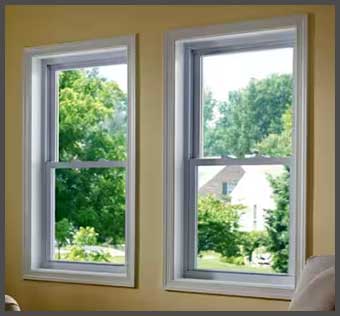
When I bought my 1960s fixer-upper, the windows were a nightmare—drafty, rattling aluminum frames that let in every breeze and street noise.
I knew I needed replacements but wasn’t ready to splurge on premium brands.
After browsing Home Depot, I stumbled upon American Craftsman windows, specifically the 70 Series double-hung models.
They were affordable, in stock, and promised energy efficiency, so I took the plunge.
Installation was a weekend project I tackled with a buddy. The windows came with clear instructions, and their vinyl frames were lightweight yet sturdy, making them easy to handle.
I was impressed by the tilt-in sashes—cleaning both sides from inside the house was a game-changer, especially for my second-floor windows. The Low-E glass and argon fill made a noticeable difference; my living room felt warmer in winter, and my AC didn’t have to work overtime in summer.
I also loved the sleek, neutral design—white frames blended seamlessly with my home’s exterior.
That said, I noticed a couple of quirks. One window had a slightly loose sash that wouldn’t stay up, which was annoying but fixed with a quick call to their customer service for a replacement part.
Another time, during a heavy rain, I spotted a minor leak at the top of a window, likely due to my less-than-perfect installation. After resealing it, the issue disappeared. Overall, these windows transformed my home’s comfort and look, and for the price, I couldn’t ask for much more.
My experience taught me that while American Craftsman isn’t flawless, they’re a solid pick if you’re on a budget and prioritize practicality.
Pros of American Craftsman Windows
- Affordability That Doesn’t Skimp on Basics
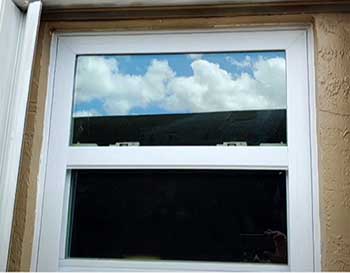
Let’s talk money—you’re probably like me, wanting quality without emptying your wallet.
American Craftsman windows are a steal, especially the 50 and 70 Series.
I paid around $200-$300 per window at Home Depot, a fraction of what premium brands like Andersen or Pella cost.
For that price, you get functional, energy-efficient windows that don’t scream “cheap.” They’re perfect for rentals, flips, or homes where you’re not chasing architectural perfection but still want reliability.
- Energy Efficiency for Real Savings
I was skeptical about budget windows being energy-efficient, but American Craftsman surprised me. Their Low-E glass and optional argon gas fill work wonders. My energy bills dropped noticeably—about 10% less on heating last winter.
The 70 Series, in particular, meets ENERGY STAR standards in many regions, which means you’re not just saving money but also doing your bit for the planet. If you live in a climate with extreme summers or winters, these windows help keep your home comfortable without cranking the HVAC.
- Low Maintenance, High Durability
Vinyl frames? Yes, please! I love that American Craftsman windows don’t need painting or staining. Unlike wood, which can rot or warp, these vinyl frames are built to last.
I’ve had mine for three years, and they still look as good as new, even after harsh Midwest winters and humid summers. A quick wipe with a damp cloth keeps them spotless. For busy folks like us, that low-maintenance vibe is a lifesaver.
- Easy Installation for DIYers
If you’re handy like me, you’ll appreciate how straightforward these windows are to install. They come in standard sizes, so finding a fit for my old window frames was a breeze.
The instructions were clear, and the lightweight vinyl made maneuvering them easy, even for a solo installer. The 70 Series’ tilt-in sashes also made post-installation adjustments a snap. Even if you hire a pro, the standard sizing keeps labor costs down.
- Variety of Styles to Fit Your Home
American Craftsman offers more than just double-hung windows. You’ve got single-hung, casement, awning, gliding, and even specialty shapes for a custom look. I went with double-hung for their classic appeal, but I was tempted by the gliding windows for a modern touch.
Plus, you can choose from grille patterns like Colonial or Prairie to add some personality. Whether your home is a cozy Cape Cod or a sleek modern build, there’s an option that fits.
Not-So-Good Parts of American Craftsman Windows
- Quality Isn’t Top-Tier
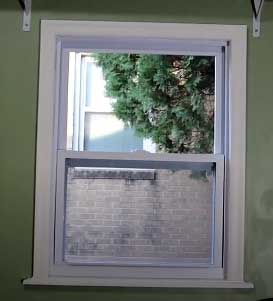
Let’s be real—American Craftsman windows aren’t competing with high-end brands like Marvin or Andersen.
The vinyl feels a bit thinner than premium options, and I noticed some flex in the frames during installation.
For my modest ranch house, this wasn’t a dealbreaker, but if you’re after windows that scream luxury or need to withstand hurricane-force winds, you might want to look elsewhere.
These are built for budget, not bragging rights.
- Limited Color and Finish Options
If you’re dreaming of bold colors or wood-like finishes, you’ll be disappointed. American Craftsman sticks to basics—white, beige, and sometimes bronze or black for the exterior.
I didn’t mind the white frames, but if your home has a unique aesthetic, the lack of variety can feel restrictive. You might need to get creative with trim or curtains to make them pop.
- Occasional Leaks and Seal Issues
I mentioned earlier that one of my windows leaked during a storm. After some research, I found this isn’t uncommon, especially if the installation isn’t perfect.
The weatherstripping on the 50 Series felt a bit flimsy, and I’ve heard from others about seal failures causing fogging between panes. My fix was simple—re-caulking—but it’s something to watch out for, especially in wet climates.
- Warranty Hassles
The lifetime limited warranty sounds great, but it’s not as ironclad as it seems. When I needed a replacement sash, the process was smooth, but I had to pay a $25 shipping fee, which felt like a nickel-and-dime move.
Also, the warranty covers materials and workmanship, but labor costs for repairs? That’s on you. If you’re expecting white-glove service, you might find the process a bit clunky.
- Big-Box Installation Risks
While the windows themselves are solid for the price, I’ve heard horror stories about Home Depot’s subcontracted installers. I went DIY to avoid this, but if you’re not handy, finding a reliable contractor is crucial.
Poor installation can lead to leaks or drafts, which defeats the purpose of new windows. You’ll need to do your homework to ensure the job’s done right.
Maintenance Tips For American Craftsman Windows
- Regular Cleaning Keeps Them Sparkling
Keeping your American Craftsman windows looking sharp is easy. I clean mine twice a year with a vinegar-water solution (avoid ammonia—it can streak the glass). A soft microfiber cloth works best to prevent scratches. For the frames, a damp cloth with mild soap does the trick.
Don’t forget the screens—pop them out and rinse with a hose to keep dust and bugs at bay. This routine takes me about an hour for my whole house and keeps everything looking fresh.
- Check and Replace Weatherstripping
The weatherstripping on my 70 Series windows is decent but can wear out, especially in harsh weather. Every spring, I inspect it for cracks or gaps. If it’s brittle, I replace it with compatible weatherstripping from Home Depot.
It’s a cheap fix—about $10 for a roll—and prevents drafts. Pay extra attention to the bottom and top of sashes, where air leaks are common. A quick check can save you from chilly surprises in winter.
- Lubricate Moving Parts
To keep the sashes gliding smoothly, I lubricate the tracks and hinges yearly with a silicone-based spray. It’s a five-minute job that prevents sticking and extends the life of the hardware. Be sure to wipe away excess lubricant to avoid attracting dirt.
For double-hung windows like mine, this makes opening and closing effortless, especially after humid summers when things can get a bit sticky.
- Inspect for Leaks and Sealant Issues
After my early leak scare, I make it a habit to check for water intrusion after heavy rains. Look at the top and bottom of the window frames where sealant meets the wall. If you spot cracks or gaps, reapply a high-quality silicone caulk.
I spent $15 on a tube, and it’s been a lifesaver. This step is critical if you live in a rainy area to prevent water damage to your walls.
- Handle Warranty Claims Promptly
If you notice issues like fogging glass or a broken sash, don’t wait to file a warranty claim. I learned this the hard way when I delayed on a loose sash, and it became a bigger hassle. Call American Craftsman’s customer service with your window’s serial number and dimensions handy.
They’re responsive, but you’ll need to be proactive. Keep receipts and warranty info organized—it’ll save you headaches down the road.
Comparing American Craftsman To Other Brands
I’ve lived with American Craftsman windows in my fixer-upper for three years, and I’m ready to pit them against Sierra Pacific, SoftLite, and Thermo-Tech to see how they hold up.
I’m breaking this down product-to-product, with all the key factors—price, energy efficiency, durability, style, warranty, and installation—tucked under clear sub-headings for each matchup.
Picture us chatting over a beer, comparing notes on what these brands bring to the table. Let’s get started with a real-user perspective to help you pick the right windows for your home.
American Craftsman Vs. Sierra Pacific
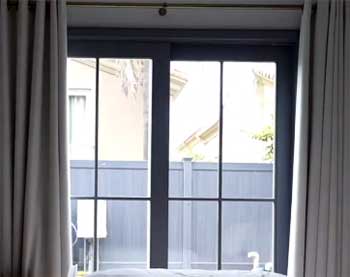
- Price and Accessibility: American Craftsman windows, like my 70 Series, cost me $200-$300 each at Home Depot, making them a no-brainer for budget shoppers. You can grab them off the shelf, no waiting required. Sierra Pacific’s H3 series or vinyl options, on the other hand, run $500-$1,200 per window, aimed at high-end homes. You’ll need to order through dealers, which adds time and cost. For my wallet, American Craftsman’s affordability and easy access were unbeatable, but Sierra Pacific’s premium quality might be worth it for a custom dream home.
- Energy Efficiency: My American Craftsman windows, with Low-E glass and argon fill, hit a U-factor of about 0.30, cutting my heating bills by 10% in the Midwest. They meet ENERGY STAR standards in many regions. Sierra Pacific’s windows, especially their wood-clad models, offer similar or slightly better U-factors (0.27-0.30), but their advanced glazing options can push efficiency higher. For my needs, American Craftsman delivered solid savings, but Sierra Pacific might edge out in extreme climates where every decimal point counts.
- Durability and Materials: American Craftsman’s vinyl frames are lightweight and durable, holding up well through Midwest winters with no warping. That said, they feel a bit thinner than premium options. Sierra Pacific’s vinyl and wood-aluminum hybrids are built like tanks, designed for longevity in harsh conditions. I noticed no issues with my windows, but Sierra Pacific’s sturdier materials might be better for coastal or windy areas. For a modest home, American Craftsman does the job; for heavy-duty needs, Sierra Pacific shines.
- Style and Customization: I chose American Craftsman’s double-hung windows for their clean, classic look, but their color options—white or beige—are limited. Grille patterns like Colonial add some flair, but customization is basic. Sierra Pacific is a designer’s dream, with wood, aluminum-clad, or vinyl frames in countless finishes and shapes. If your home needs a unique aesthetic, Sierra Pacific’s versatility is unmatched, but American Craftsman’s simplicity worked for my ranch house.
- Warranty and Support: American Craftsman’s lifetime limited warranty covered a replacement sash for me, but I paid $25 for shipping, and labor wasn’t included. Their customer service was decent but slow. Sierra Pacific offers a robust warranty, often covering more components, and their dealer network provides better support, from what I’ve heard. If hassle-free service matters to you, Sierra Pacific has the edge; American Craftsman’s warranty is fine but feels bare-bones.
- Installation Ease: Installing American Craftsman windows was a breeze—standard sizes fit my old frames, and the lightweight vinyl was easy to handle solo. Sierra Pacific’s windows, especially wood-clad ones, are heavier and often require professional installation due to custom sizing. For DIYers like me, American Craftsman’s simplicity and Home Depot availability made the process quick and cheap. Sierra Pacific demands more planning and expertise.
American Craftsman Vs. SoftLite
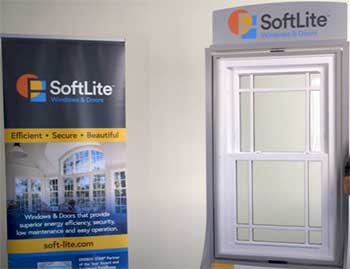
- Price and Accessibility: American Craftsman’s $200-$300 price tag per window was perfect for my budget, and I grabbed them straight from Home Depot. SoftLite’s Elements or Imperial Pro lines, priced at $400-$800, are a step up, typically sold through specialty dealers. The higher cost reflects better materials, but for a quick upgrade, American Craftsman’s price and availability were hard to beat. SoftLite’s worth considering if you’re investing long-term.
- Energy Efficiency: SoftLite’s triple-pane glass and foam-filled frames boast U-factors as low as 0.15, making them a powerhouse for energy savings. My American Craftsman 70 Series, with a U-factor of 0.30, still cut my energy bills noticeably. In my climate, the difference wasn’t huge, but in extreme winters or summers, SoftLite’s superior insulation could save you more. For budget-conscious folks, American Craftsman’s efficiency is plenty respectable.
- Durability and Materials: American Craftsman’s vinyl frames are durable enough for my home, showing no wear after three years. SoftLite’s frames, especially in their Elements line, feel thicker and are reinforced for extra strength, ideal for high-wind areas. I had a minor sash issue with American Craftsman, but nothing major. SoftLite’s build quality feels a touch more robust, but American Craftsman holds its own for everyday use.
- Style and Customization: SoftLite offers more finishes than American Craftsman, including wood-grain laminates and a few bold colors. Their grille options are also more varied. My American Craftsman windows look sleek but lack flair with just white or beige options. If you want a modern or custom look, SoftLite gives you more to play with, but American Craftsman’s classic designs suited my simple needs.
- Warranty and Support: SoftLite’s lifetime warranty covers glass, frames, and sometimes labor, with stellar customer service reviews. American Craftsman’s warranty is lifetime but limited, with fees like $25 for shipping parts. My experience with their support was okay but clunky. SoftLite’s service feels more polished, making it a better pick if you prioritize long-term support. American Craftsman’s warranty works, but it’s not as comprehensive.
- Installation Ease: American Craftsman’s lightweight vinyl and standard sizes made my DIY installation a weekend project. SoftLite’s windows are slightly heavier due to their reinforced frames, but still manageable for DIYers. Both brands offer clear instructions, but American Craftsman’s Home Depot availability meant I could grab extras on the spot. SoftLite’s dealer-based model might slow you down. For ease, American Craftsman wins.
American Craftsman Vs. Thermo-Tech
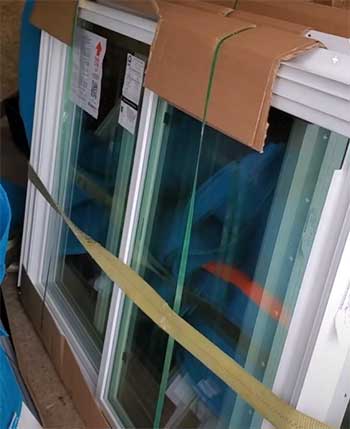
- Price and Accessibility: Thermo-Tech’s Classic and Premium lines run $350-$600 per window, pricier than American Craftsman’s $200-$300 range. I found Thermo-Tech through a local supplier, which wasn’t as convenient as Home Depot’s in-store stock. For budget upgrades like mine, American Craftsman’s lower cost and easy access were perfect. Thermo-Tech’s a solid mid-range option if you can spend a bit more.
- Energy Efficiency: Thermo-Tech’s windows hit U-factors around 0.25, slightly better than American Craftsman’s 0.30. Both meet ENERGY STAR standards, but Thermo-Tech’s thicker frames and glazing options give a slight edge in insulation. My American Craftsman windows cut my bills enough for my needs, but Thermo-Tech might save a bit more in extreme climates. For the price, American Craftsman’s efficiency is tough to beat.
- Durability and Materials: Thermo-Tech’s vinyl frames felt sturdier when I checked them out, with less flex than American Craftsman’s. They’re built for tough conditions, like high winds. My American Craftsman windows have held up fine, but their thinner vinyl might not last as long in harsh environments. For a standard home, American Craftsman’s durability is sufficient; Thermo-Tech’s robustness suits more demanding settings.
- Style and Customization: Thermo-Tech offers a few more color options than American Craftsman’s white or beige, plus varied grille patterns. Still, their designs lean functional, not flashy. My American Craftsman double-hung windows fit my home’s classic vibe, but I missed bolder finishes. Thermo-Tech gives you a bit more style flexibility, but neither brand competes with high-end customization.
- Warranty and Support: Thermo-Tech’s lifetime warranty is similar to American Craftsman’s but often includes better coverage for components. Their support, via dealers, seems more responsive than American Craftsman’s, which felt slow during my sash replacement. If you want smoother service, Thermo-Tech has a slight advantage, but American Craftsman’s warranty gets the job done for basic needs.
- Installation Ease: Both brands are DIY-friendly, but American Craftsman’s lighter vinyl and standard sizes made my installation easier. Thermo-Tech’s thicker frames are a bit heavier, potentially trickier for solo projects. American Craftsman’s Home Depot availability was a lifesaver for quick fixes. Thermo-Tech’s distributor model can delay things. For hassle-free installation, American Craftsman takes the win.
In summary, American Craftsman is my pick for budget-friendly, no-fuss windows, perfect for quick upgrades. Sierra Pacific suits luxury builds, SoftLite excels in energy efficiency and service, and Thermo-Tech offers a durable mid-range option.
Your choice hinges on your budget, climate, and style needs, but American Craftsman delivered the value I needed.
Frequently Asked Questions (FAQ)
American Craftsman windows are made by Ply Gem, a subsidiary of Cornerstone Building Brands. They were once owned by Andersen but were sold to Ply Gem in 2018. You can find them primarily at Home Depot, where they’re marketed as a budget-friendly option for homeowners.
“Best” depends on your needs, but Andersen and Pella often top the list for premium quality, with superior materials like Fibrex or fiberglass. For mid-range, Simonton and Jeld-Wen offer great value. American Craftsman is a solid budget pick but doesn’t match the durability or aesthetics of higher-end brands.
Yes, American Craftsman windows are insulated. Many models, like the 70 Series, come with Low-E glass and optional argon gas fill, which improve thermal efficiency. They meet ENERGY STAR standards in certain regions, helping reduce heat loss and energy costs.
American Craftsman offers a lifetime limited warranty on their vinyl windows, covering defects in materials and workmanship for the frame, sash, and glass. However, labor costs for repairs and shipping fees (like $25 for replacement parts) are typically not covered.
Why American Craftsman Windows Are Worth It?
I can’t recommend American Craftsman windows enough if you’re looking for an affordable, reliable upgrade. They transformed my drafty old house into a cozy, energy-efficient home without draining my savings.
With easy maintenance, decent performance, and a variety of styles, they’re perfect for budget-conscious homeowners like me. Whether you’re flipping a property or settling into your forever home, these windows deliver value you can trust.
Give them a shot—you’ll be glad you did!
